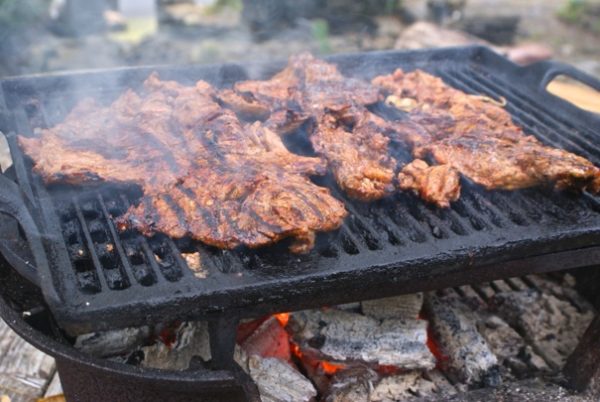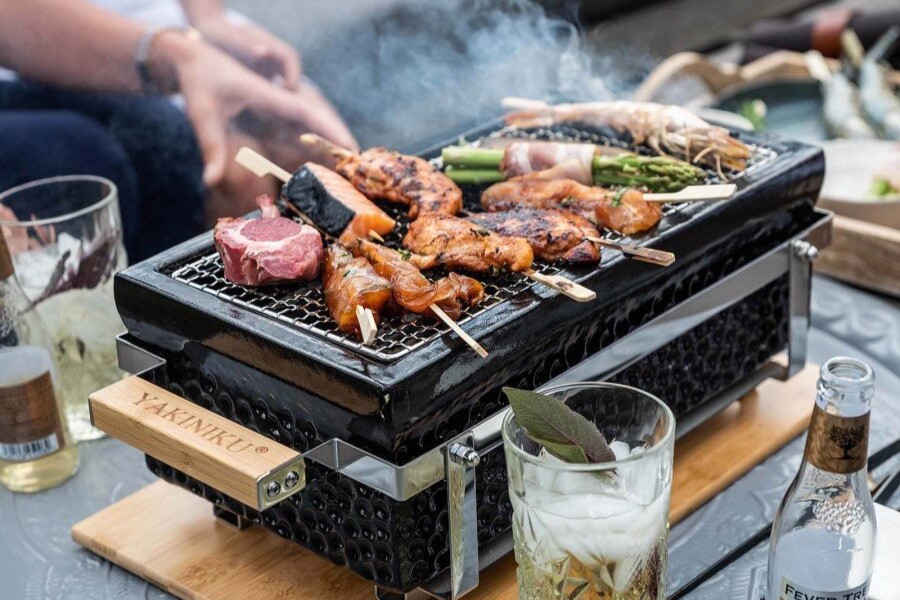When it comes to choosing between a Hibachi Grill and a Teppanyaki Grill, many cooking enthusiasts and kitchen professionals often find themselves pondering this very question. Both grills offer unique cooking experiences and are deeply rooted in Japanese culinary traditions. This article aims to shed light on the distinctive features of each grill, helping you make an informed decision about which might be best for your cooking style. Before diving deeper, it’s essential to comprehend the key differences and similarities between these two popular grilling methods.

The Origins of Hibachi Grills
The Hibachi Grill is a traditional Japanese heating device that has been used for centuries. Initially introduced as a household heater, it evolved into a cooking appliance. The Hibachi Grill is characterized by its small, portable design and the use of an open-grate system over charcoal, producing high heat and rapid cooking times.
The Teppanyaki Grill: A Modern Twist
Unlike the Hibachi, the Teppanyaki Grill is relatively modern, conceptualized in the post-war era in Japan. Teppanyaki cooking involves using a large, flat iron griddle with propane or electric heat. This method caters to a diverse audience by allowing chefs to cook food directly in front of diners, making it a social and interactive experience.
Key Differences Between the Two
Cooking Surface and Temperature
The main difference between these two grills lies in the cooking surface and temperature control. A Hibachi Grill uses a charcoal fire beneath an open grate, allowing for high temperatures and direct heat. This is ideal for quick grilling of meats and vegetables. On the other hand, a Teppanyaki Grill employs a smooth, flat surface that provides even heat distribution and precise temperature control, perfect for cooking a variety of foods simultaneously.
Portability
Hibachi Grills are typically compact and lightweight, making them perfect for outdoor gatherings and camping trips. Conversely, Teppanyaki Grills are bulkier, often requiring a stationary setup, but they offer more space and versatility for a larger selection of dishes.
Flavor and Style
One of the appeals of a Hibachi Grill is the smoky flavor that charcoal imparts to food. Many purists argue that this adds an authentic touch to outdoor cooking. Teppanyaki Grills, meanwhile, focus on flavor through technique, emphasizing the chef’s cooking skills and use of seasonings and sauces to enhance the taste profile.
Popular Dishes for Each Grill
Hibachi Cuisine
Typical dishes prepared on a Hibachi Grill include simple marinades and straightforward ingredients like seafood, shellfish, and meats anything that benefits from a quick sear and aromatic smoke.
Teppanyaki Cuisine
Teppanyaki cooking often features complex dishes, utilizing beef, chicken, seafood, and vegetables combined with flavorful sauces and served with rice or soba noodles. This method emphasizes multi-ingredient dishes that enhance the dining spectacle.
Choosing the Right Grill for Your Needs
Consider Your Cooking Style
If convenience and portability rejoice with your outdoor adventures, the Hibachi Grill is your companion. However, if you admire intricate cooking styles and enjoy entertaining guests, a Teppanyaki Grill may better cater to your needs.
Budget and Space Limitations
Budget-conscious individuals might lean towards Hibachi Grills due to their affordability, while Teppanyaki Grills offer a long-term investment for those with room to accommodate their larger sizes.
Cooking Preferences
If you value the classic, robust flavors that come from direct charcoal grilling, go with a Hibachi Grill. For diverse cooking experiences that allow more creativity, choose a Teppanyaki Grill.
Pros and Cons
Hibachi Grill Pros
- Lightweight and Portable
- Imparts Smoky Flavor to Food
- Cost-Effective
Hibachi Grill Cons
- Limited Cooking Surface
- Requires Charcoal Maintenance
- Basic Temperature Control
Teppanyaki Grill Pros
- Large Cooking Surface for Versatile Dishes
- Even Heat Distribution
- Ideal for Social Cooking
Teppanyaki Grill Cons
- Heavier and Less Portable
- Higher Initial Cost
- Requires More Setup Space
Hibachi and Teppanyaki Grills in Todays Context
Today’s culinary landscape sees the growing popularity of both Hibachi and Teppanyaki Grills. While the spark of tradition keeps the Hibachi popular especially among outdoor cooking enthusiasts, Teppanyaki has carved its niche in interactive restaurants and social gatherings.
Conclusion
Understanding all the differences and features is crucial in deciding between a Hibachi Grill versus a Teppanyaki Grill. Whether you’re after the rich, smoky flavors of a Hibachi or the intricacies of Teppanyaki cooking, both grills offer unique and rewarding experiences. Your choice ultimately depends on your personal preferences, space, and social cooking ambitions.

FAQs
Can I use my Teppanyaki Grill outdoors?
Yes, many Teppanyaki Grills are designed for both indoor and outdoor use, provided that you have access to electricity or propane.
What type of food is best suited for a Hibachi Grill?
Foods requiring high heat and fast cooking, such as thin cuts of meat, seafood, and vegetables, are ideal for a Hibachi Grill.
Do Hibachi and Teppanyaki grills require special maintenance?
Regular cleaning and proper care of grilling surfaces are necessary for both types to extend their longevity and ensure optimal performance. Learn more about maintaining grilling equipment by visiting Grill Maintenance Tips.
This article contains affiliate links. We may earn a commission at no extra cost to you.

